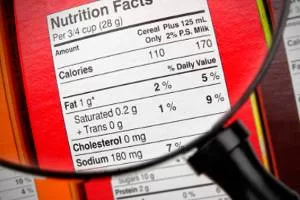Just nine per cent of UK shoppers always read the ingredients label on their food shopping.
 That’s the finding of new research by Canadean Consumer, which also reveals that while 32 per cent of consumers ‘often’ read the ingredients list, 21 per cent ‘rarely’ or ‘never’ read the ingredients.
That’s the finding of new research by Canadean Consumer, which also reveals that while 32 per cent of consumers ‘often’ read the ingredients list, 21 per cent ‘rarely’ or ‘never’ read the ingredients.
This, says the market research company, means many shoppers are unfamiliar with ingredients such as DHA, stevia and taurine.
Women (44 per cent) are more likely than men (39 per cent) to ‘always’ or ‘often’ read the ingredients list on products they buy – in fact, 26 per cent of males ‘never’ or ‘rarely’ read the ingredients list, compared to only 17 per cent of females.
This difference may imply that women are generally more health-conscious than their male counterparts, and are specifically using ingredient information as a means of guiding their healthy product choices.
Moreover, the study revealed that consumers from a higher social status are more likely to check ingredients lists always or often (44 per cent) compared to consumers from a lower social status (38 per cent).
“Consumers from lower social status groups may be less likely to deviate from regular product purchases as a result of tighter budget constraints,” suggests Canadean Consumer research manager Alex Wilman. “When it comes to checking ingredients, consumers are more likely to do so with unfamiliar products. As a result, consumers from higher social status groups may therefore check ingredients more frequently.”
Everyday ingredients such as salt, caffeine and olive oil are familiar to virtually all consumers, regardless of whether they check the ingredients list on a product or not. Awareness of newer and more specialist ingredients, such as DHA, stevia and taurine, however, relies more heavily on consumers reading labels.
“With only nine per cent of consumers always checking the ingredients on products they buy, awareness levels of ‘less-common’ ingredients may stay low,” adds Wilman.

